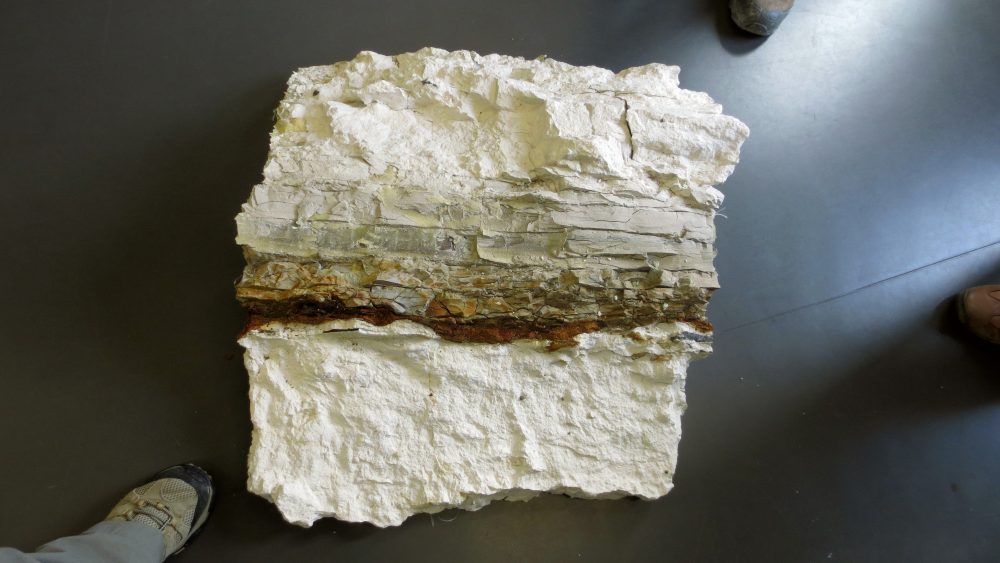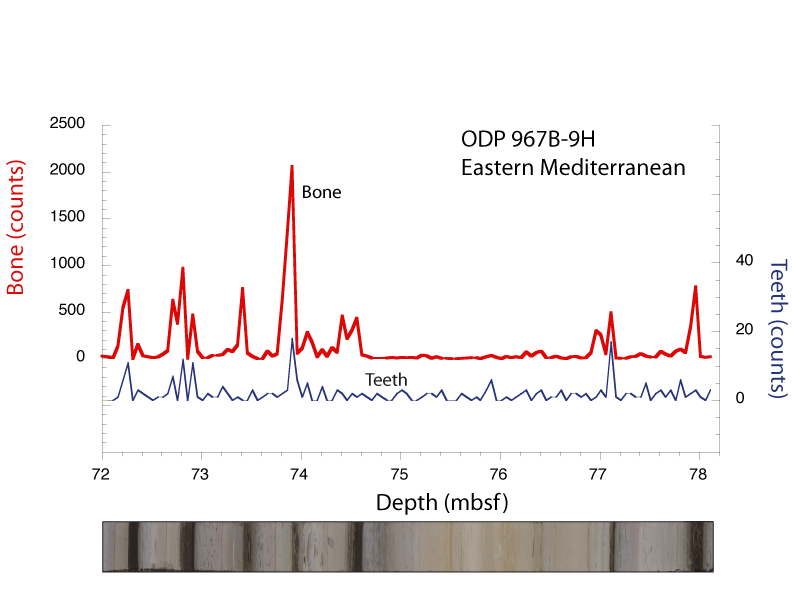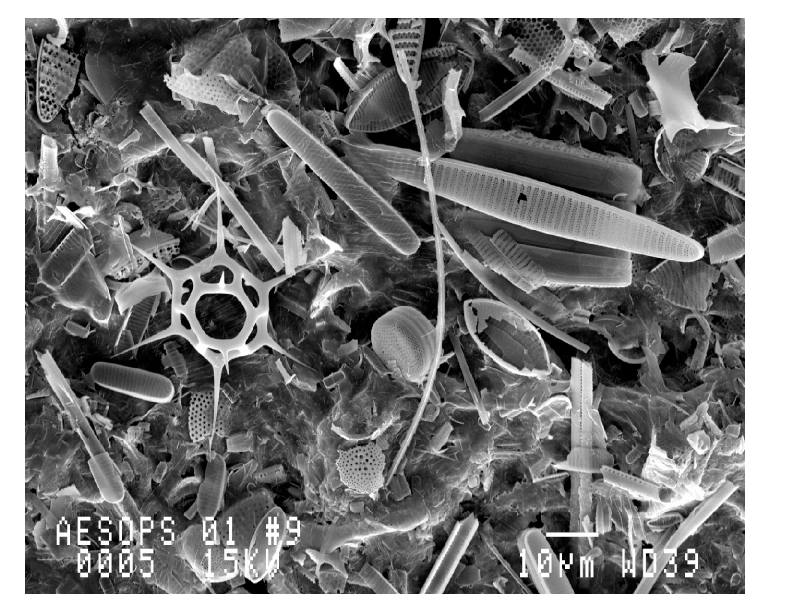Although lots of things don’t preserve well as fossils, it turns out that we can reconstruct most parts of ecosystems pretty well. The terrestrial plant record is well preserved as pollen grains. The base of food chains has a good …
The Cretaceous-Paleogene Boundary in Denmark
This is a neat idea–slather large amounts of resin on the outcrop at Stven’s Klint, in Denmark and then pull of the resulting ‘peel’ to make a sample of the Cretaceous-Paleogene boundary section. In this slab (taken by folks at …
Fish and Hypoxia
One of the predictions for the future is that parts of the ocean are expected to develop extensive low oxygen (hypoxic) zones. One worry is that larger low oxygen areas may affect fish, lowering catches and depriving people of rich …
Cretaceous Thermal Maximum ~85-90 Ma
The Cretaceous Thermal Maximum is the warmest period in Earth’s history in the last ~200 million years. Sea surface temperature data (from geochemical studies of planktic foraminifera and organic biomarkers) suggest that tropical temperatures exceeded 35°C. These temperatures were 5-7°C …
Deep Sea Sediments and Microfossils
As a professional fossil watcher, it is a particular delight to explore deep sea mud–the stuff is literally made out of fossils! Of course, they are rather small (a few microns to a few millimeters), but there is lots of …




